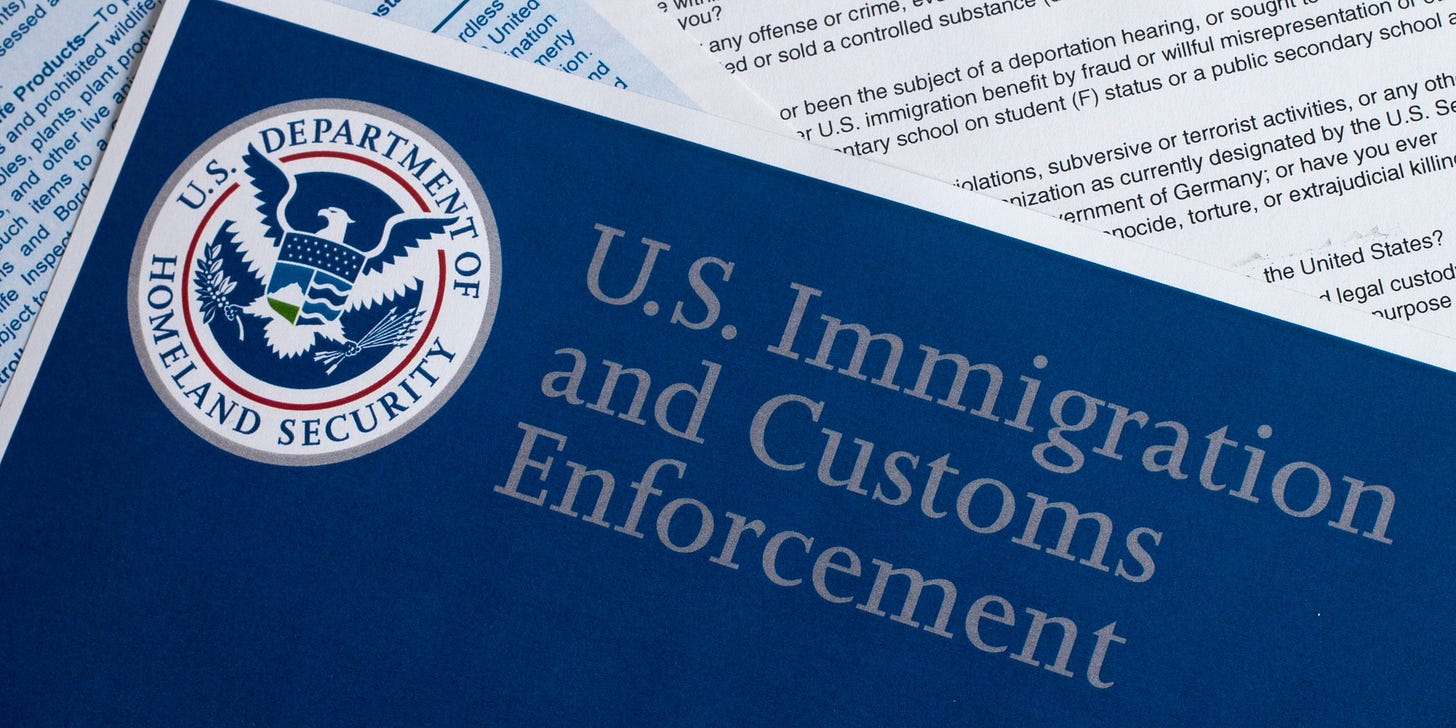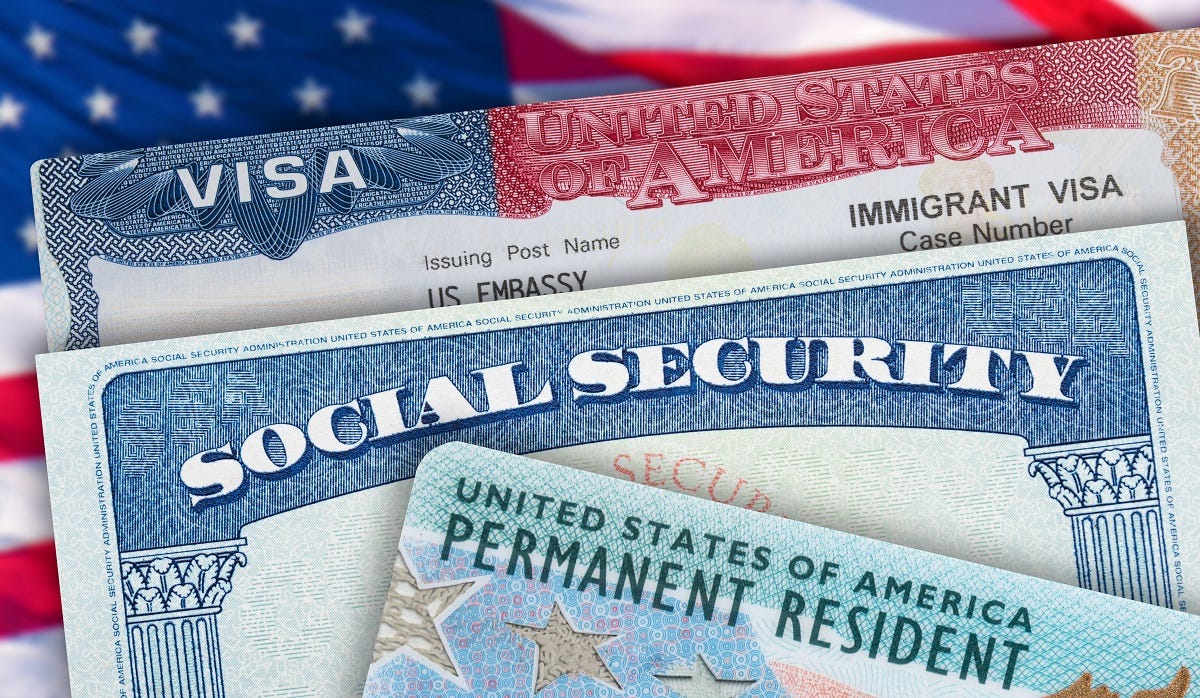Kickstarting the Great Repatriation Through Visa Cancellation
Nationalist Policies Come in Many Forms
When talking about the demographic replacement of Heritage Americans, and the actions that would be necessary to halt or reverse that process, most Americans imagine that it would be a mammoth undertaking requiring new laws to be passed, constitutional amendments, the use of force and many other unpleasant and time consuming processes.
This could not be further from the truth!
While it is true that some policies, such as revoking citizenship from all naturalized foreign born people, would require something as drastic as constitutional change, such policies are generally not necessary, and we have never advocated for this.
Instead, nationalist policy makers can take much less drastic steps which would halt the demographic transformation of the nation through simple policy changes. The first best way to achieve a sea-change in the demographic trajectory of the United States is use the powers of the executive branch to cease the issuance of visas, and to ensure those who have an expired visa leave the country.
Under Title 8, Section 1182 of the U.S. Code, part of the Immigration and Nationality Act of 1952, the President of the United States is empowered to suspend the entry of “any aliens or of any class of aliens into the United States [who] would be detrimental to the interests of the United States”. This act also allows for cabinet secretaries, such as the Secretary of Health and Human Services and the Secretary of State, to prevent the entry of immigrants for a range of concerns from public health to the foreign policy interests of the United States.
These executive branch powers were upheld in a 5-4 Supreme Court decision in 2018 and need only be fully exercised.
This change would affect some 3.2 million immigrants, roughly 2.56 million of whom would be recent immigrants, overwhelmingly consisting of Indian workers and foreign students. Countries such as Canada and those in Europe could be exempt from executive proclamations on immigration, thus allowing their citizens (who are overwhelmingly Western) to remain within the United States.
But, 2.56 million people is a relatively small selection of the 45.3 million immigrants (legal and illegal) that the United States government acknowledged as living in the nation in 2021.
Most immigrants to the United States who do not already hold US citizenship via naturalization (45%) are classified as lawful permanent residents (28%), more commonly known as “Greencard holders”. This population, consisting of some 12.7 million people, can be dealt with through some creative policy making, much of which has been tried in a temporary fashion before.
All Green Cards issued after 1989 are subject to periodic renewal, most often every 2 or 10 years depending on the nature of the immigrants reason for residence within the United States. The United States government can refuse to renew Green Cards for several reasons, the most common being those related to immigration fraud.
Immigration fraud is so widespread in the United States that the government of New York City, the State Department, the New York Times (2022), and even the White House have long and storied histories of attempting to mitigate the phenomena, to little effect. All Green Card renewals should be subject to rigorous fraud checks, and any indication of fraud should result in a refusal to renew the card.
A more straightforward measure would be to simply suspend all renewals of Green Cards. The Trump Administration took this measure for a short time during the COVID-19 pandemic, when the United States Citizenship and Immigration Service applied a “general hold” to all permanent residency applications. A pro-American administration could easily reenact this policy, thereby resolving the issue of Green Card holders and simply requiring all such immigrants to depart over the 10 years it will take for the current stock of Green Cards to expire.
This measure would effect some 8.76 million recent immigrants.
There is one final group which must be addressed, comprising the minor children of the immigration population of the United States. According to migrationpolicy.org there are some 18 million children of immigrants in the United States under the age of 18 and in the care of their parents. Roughly 7.2 million of these children have no US citizen parent.
It is illegal, of course, to deport U.S. Citizen children without justification, but justification comes by way of parental consent. The United States does not prevent immigrant parents from removing their US citizen children from the United States, and policies could be changed to better facilitate their removal.
Currently the Department of Homeland Security has internal policies designed to make it as easy as possible for illegal immigrants and overstayers to facilitate guardianship for their children, and this policy must change. DHS must stop facilitating these arrangements and must put in place policies which do not allow parents to leave their children with any random person they declare to be the child’s guardian.
These policies, namely the refusal to facilitate guardianship for the children of immigrants, could facilitate the removal, at minimum, of some 5 million children from the United States through the deportation of their parents.
All of the policies suggested herein could result in the removal of some 16.32 million recent immigrants and their children from the United States, without revoking a single persons citizenship or changing a major piece of legislation. This would also result in the population share of Whites in the US increasing from 57% to just above 60% and reverse 20 years of immigrant inflows to the nation.







